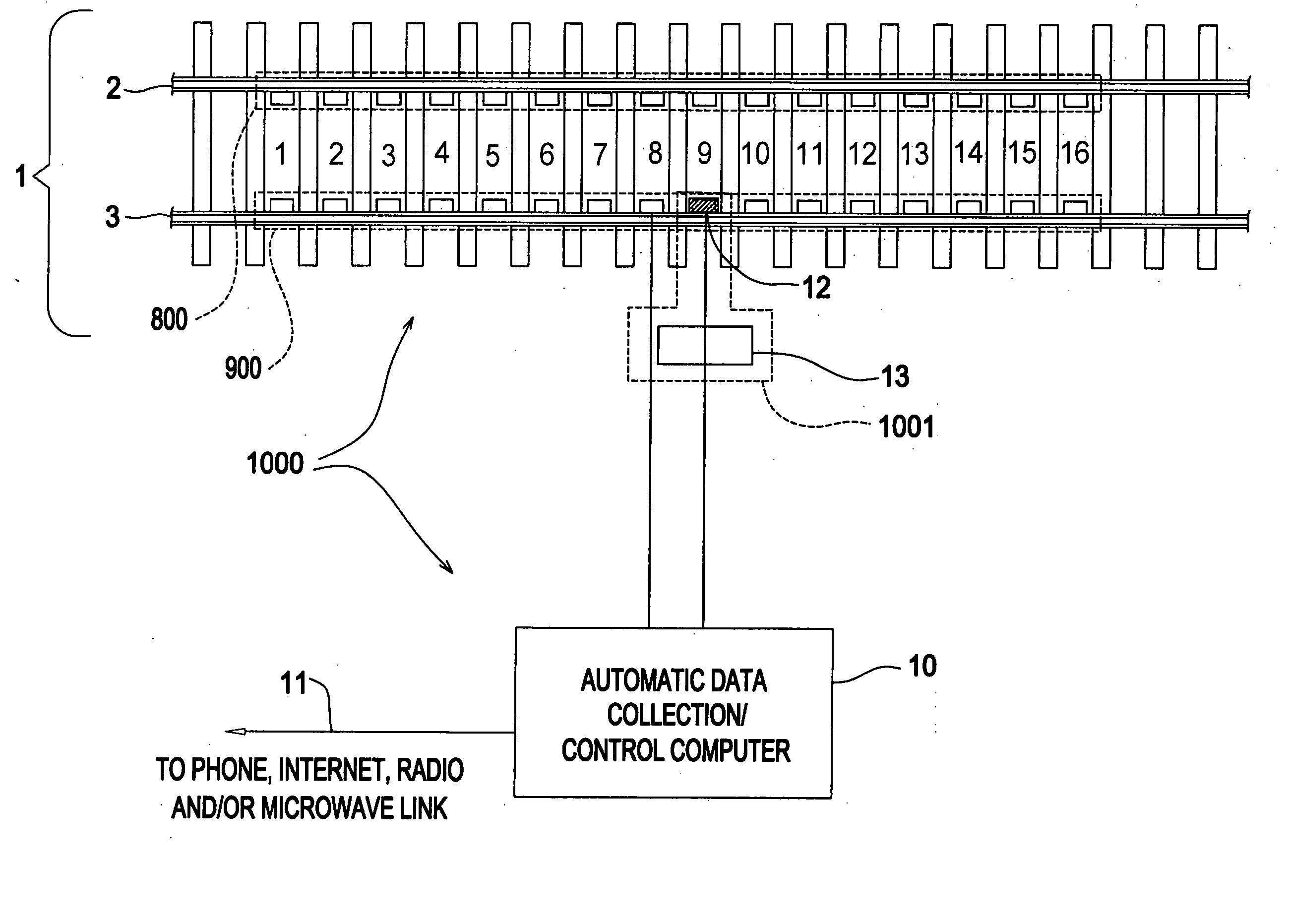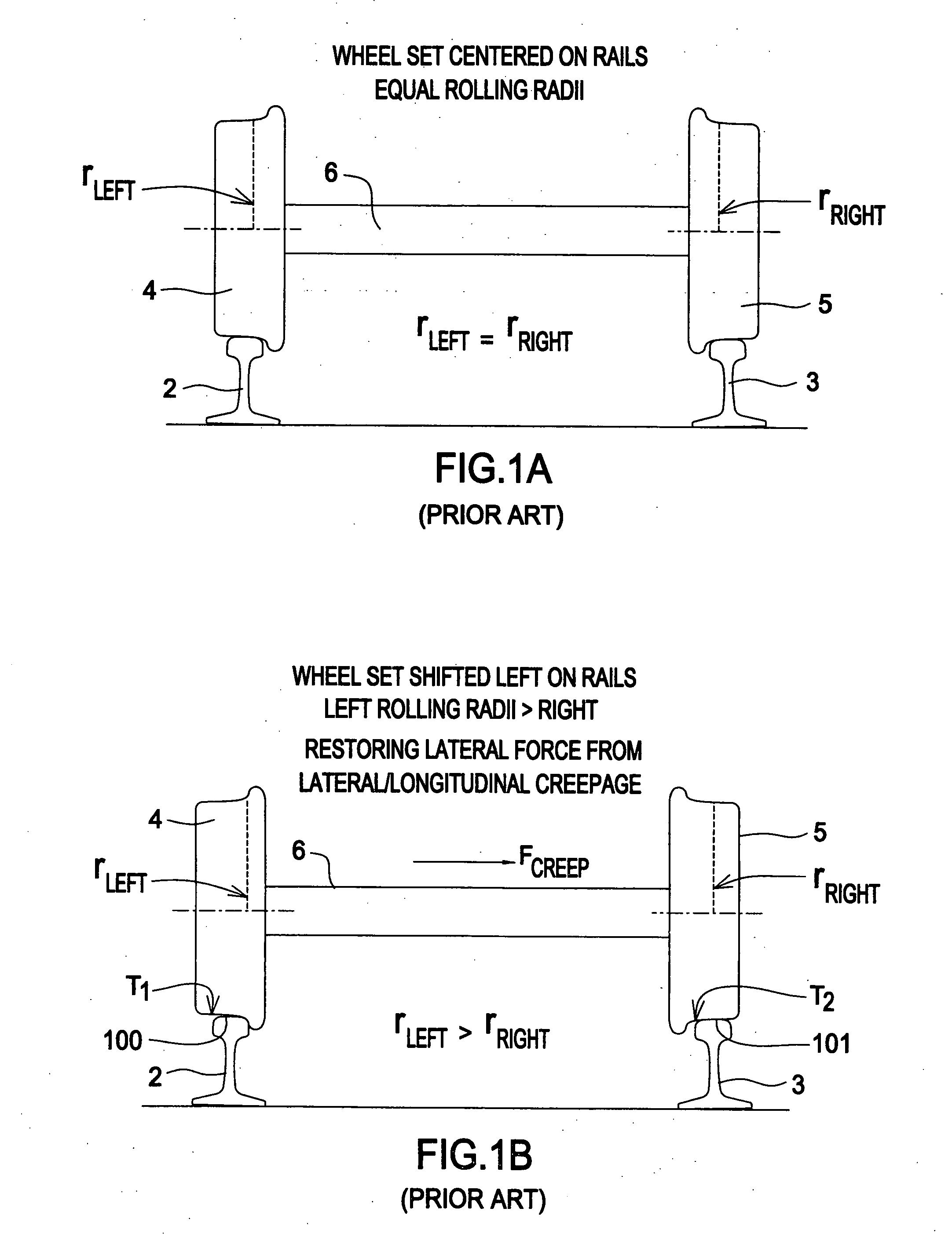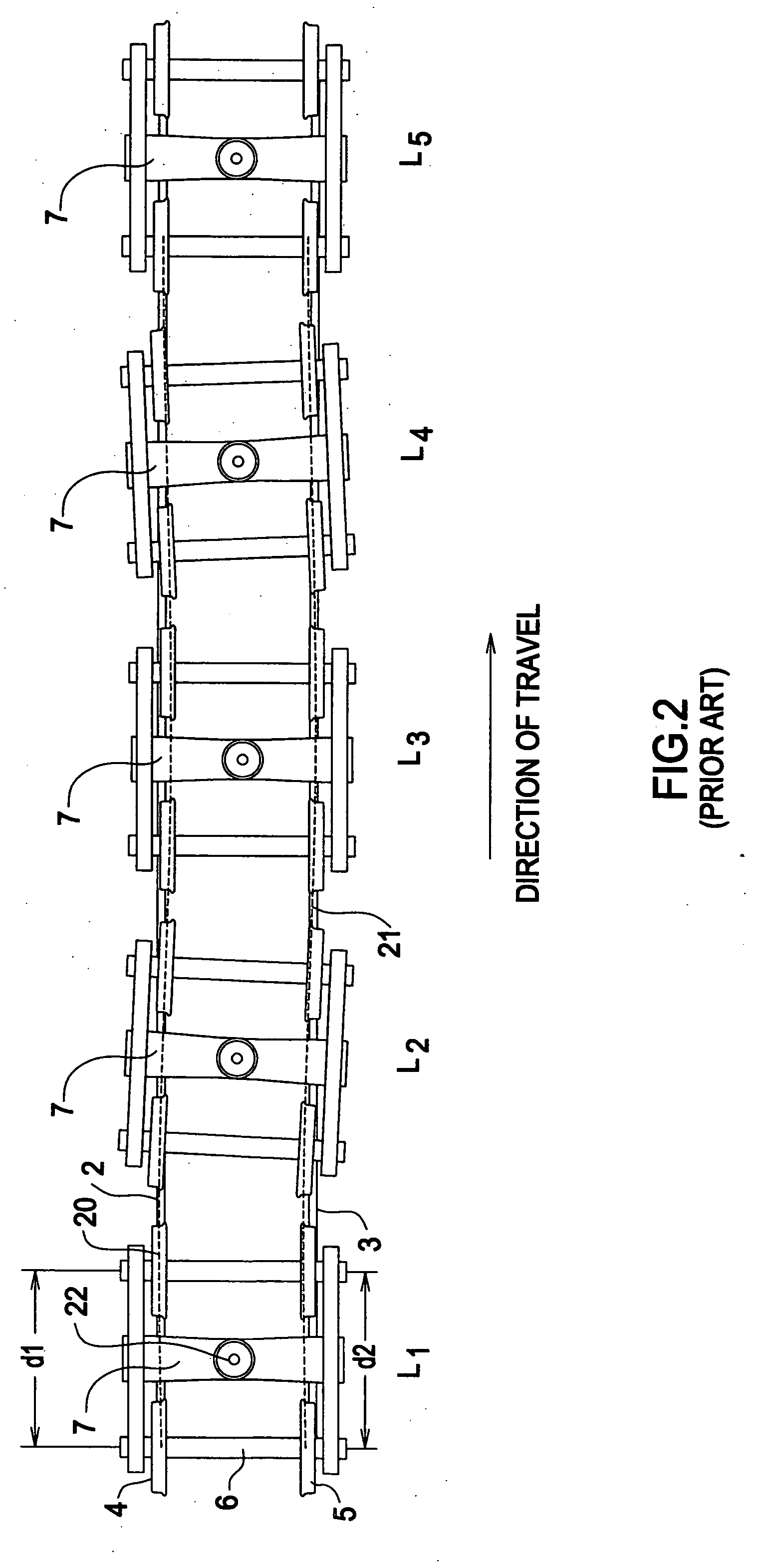Railroad car lateral instability and tracking error detector
a technology for detecting lateral instability and tracking errors, which is applied in railway auxilary equipment, railway signalling, transportation and packaging, etc., can solve problems such as increased derailment risk, excessive suspension wear, and damage to lading carried by railroad vehicles
- Summary
- Abstract
- Description
- Claims
- Application Information
AI Technical Summary
Benefits of technology
Problems solved by technology
Method used
Image
Examples
Embodiment Construction
[0120] The preferred embodiment of the invention to detect lateral instability and tracking errors in North American freight railroad train service is shown in FIG. 4 and consists of:
[0121] 1. Arrays of 16 inductive proximity sensor pairs 8,9 mounted on the left and right rails 2,3 of a railroad track 1 with a spacing of approximately 24 inches between sensor pairs.
[0122] 2. Inductive proximity sensors 8,9 with a nominal detection range of 50 mm, an internal switching relay, a switching frequency of at least 250 Hz. and an operating voltage range of 10-30 VDC.
[0123] 3. Inductive proximity mounting brackets (14-17 in FIGS. 6a, 6b) that mount the inductive proximity sensors on the rails such that the sensor face resides 1.60 inches below the top of rail and centered laterally 2.34 inches from the inside edge of the rail head.
[0124] 4. A railroad car identification system 1001 in FIG. 4 comprised of the radio identification tag reader 13 and wheel detector 12.
[0125] 5. An automati...
PUM
 Login to View More
Login to View More Abstract
Description
Claims
Application Information
 Login to View More
Login to View More - R&D
- Intellectual Property
- Life Sciences
- Materials
- Tech Scout
- Unparalleled Data Quality
- Higher Quality Content
- 60% Fewer Hallucinations
Browse by: Latest US Patents, China's latest patents, Technical Efficacy Thesaurus, Application Domain, Technology Topic, Popular Technical Reports.
© 2025 PatSnap. All rights reserved.Legal|Privacy policy|Modern Slavery Act Transparency Statement|Sitemap|About US| Contact US: help@patsnap.com



